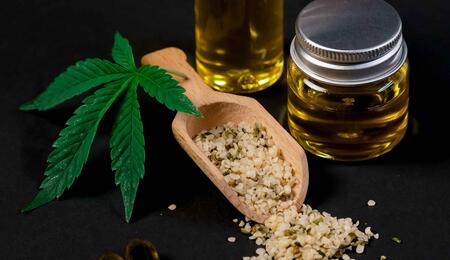Vegging

Top tips
Top tips
Welcome to my top tips page. Here you will find helpful and useful tips that will aid you, in future ventures. As commercial growers, we are hard wired to only veg our plants for as little as 3 weeks, yet we put so much expectation on our plants. However, when we do meet the target yields, we do not think twice about the veg period. I will tell you how to max your plants out to the fullest potential, also how to add an extra 30% yield to your crop...
Vegging for Longer:
When I was younger I was always wanted to flower my plants at the earliest chance. As I got older and wiser, it became apparent to me that the longevity of the plant in question is key. I soon realized that 21 days of growing time was commercially suitable, if turning over many plants over shorter grow times is the aim of the game. However, if summer time is the natural growing period outdoor plants experience, how can 21 days compare?
This brings me to point about vegging for longer. I personally would advise vegging plants from seed, for 56-70 days. I would recommend for clones vegging for 42-49 days. 10 weeks of vegging time allows you to really establish a shrub that is big, bushy and strong. Pre flowers will be evident and cloning should be very simple. Try vegging for 10 weeks and flowering for 10 weeks and see how much differently your plants grow. Another interesting factor to consider is the clones you would take will be 10 weeks old. The next time you veg again the clone will be 20 weeks old, then the third grow the clone will be 30 weeks old. Age plays a major role in the longevity of clones and mother plants. A clone kept alive for a long period of time will always react better in any given scenario that a new seedling.
14 hours of light
In nature, you will find it goes through the following light cycles from the start of year... 12/12, 14/10/, 16/10, 14/10, 12/12, 10/14 and slowly reducing 9 hours of light. Again commercially we are taught to veg plants under 24 hours of light and 18/6. A lot of growers are pressured to shorted vegging times due to electric and heat issues. Vegging for 14 hours a days will allow 10 hours of darkness, as a result the plants will grow bigger and faster. Exhibiting pre-flowers much earlier than the 6 week anticipated date. Not only will this save 4 hours a day of light time (28 hours per week), the temps in the grow room should be easier to maintain. The other advantage is the eager grower who sleeps in the same room as the grow tent, can now treat themselves to 10 hours of sleep time, growing bigger plants in the process. This is also great for the old school growers working with regular seeds, as the pre flowers are more evident much earlier on. In fact, after the first wave of pre flowers, plenty more will appear until the plant is showing all the signs of wanting to flower.
Build That Root Ball!
Big roots equal big shoots. This is how Deep Water Culture systems can produce giant white root balls that can harvest 1-2 per plant. A plant will flower once it has developed a tap root and anchored itself somehow to the medium it shall be flowered in. Usually 21 days before the plant will naturally induce flowering. Root development slows down significantly during flowering, so the aim is to build one huge root base that will feed like an adult plant. Adding microbes to the medium is also an excellent way to really improve the plants, allowing a symbiotic relationship to form in the medium. Microbes are the plants best friend and have the job of breaking down various requirements the plant needs and feeding it to the plant through the roots. As a result the microbe groups will happily feed off the available sugars and carbon, allowing a true life organic system to work together with the plant. There are now many microbe and fungi products available. Do your research and see which companies offer the specific ones your plants will really depend on. Once you lock in the symbiotic relationship, your root system will do everything in its power to make the plant as strong and healthy as possible. A root system that has been developing for 50 days plus will produce far greater than that of one only developed for 21 days. Despite the quicker turn around, I believe the advantages in vegging for 30 days more far exceed the necessity to harvest early.
Foliar Feed
During the growing phase the young plants are working hard top feeding and bottom feeding. This is a great time to spray your plants with a very fine mist. Always spray on to and the under sides of leaves. Avoid soaking the plants until the point of dripping wilting plants. I personally enjoy spraying my vegging plants with a mix of the following:
- Seaweed and water
- Humic Acid and water
- Guano and water
- Co2 Tabs and water
- 3% Hydrogen Peroxide
For plant vitality I find a light mix of water and seaweed with guano is magical. Also a light mix of a good humic acid will keep plant health to a maximum. The 3% hydrogen peroxide will keep the canopy sterile and oxygen rich. The same applies with Co2 tabs, as they release ready available Carbon Dioxide to the plant stomata. I have learnt from experience that as long as your air flow is working well; the peroxide and guano are great preventatives for Powdery Mildew. Avoid spraying plants too late in the evenings before lights out and especially after the third week of flowering. This can lead to all sorts of problems that later on such as bud rot and mildew. Take care when spraying and always make sure your ventilation and humidity control are locked in.
Pot Your Plants Up
Pot size is very important and quite often over looked. The average grower will look at a large pot and assume, the plants roots will fill the pot accordingly. However, there is a great importance to re potting, new growth and overall ability to feed at a constant rate. For example rather than feed 4ml per liter, you would feed 2ml per half liter twice as often. In my opinion, this way of feeding during the young plant life cycle really promotes faster growth. Once you know your plant is totally root bound, yet shows signs of total root health and hairy thick roots over lapping one another, you can now transplant to a bigger pot and repeat the process. Until of course you are ready to place the plant in the final pot for harvest. I personally like to grow my plants for the first 2 weeks in the smallest pots possible. The root ball of the plant is always productive and vibrant, then when they are transplanted again, I can see they really thrive and push for new nutrients.
Keeping Clones Alive For Longer
This method of mine basically involves me keeping clones alive for 6 to 8 weeks before the growing phase begins. I do not have to fit to a strict growing schedule, so prefer to keep my clones alive under a soft light for a long time. During this time, my other projects are finishing but rather than plant new seedlings or freshly rooted first generation clones, I will have clones that have been alive for 8 weeks under a small fluorescent. I am not after size but want to have older plants to work with. Then from this stage they will go through their normal vegging routine and then finally flowered. On the basis that your lighting regime is correct, you can achieve mature clones that are growing slowly ready to transplant straight to the grow room. Having mature clones makes everything work better in my opinion. The clone will be very tough and sturdy and worst case will survive without water and maintain a good plant health for a good period of time.
Oxygen Is Key!
One of the best tools a grower can have is a good quality water pump. Adding dissolved oxygen to your nutrient supply keeps the water oxygen rich and in return, lush hairy white roots. You can literally leave an air stone or two, bubbling away constantly. Not only will this ensure you prevent aerobic bacteria forming (bad bacteria with a Sulphur smell) but you can now take full advantage of introducing microbial life. If you are interested in working with microbes and beneficial bacteria, then a rich oxygen source is essential. If you are of a culture that adds nutrients to a bottle and top feeds, then the water you are using will technically become ‘ stagnant ’ after a few minutes. Even if you have taken the water from the tap and it seems oxygen rich, the water will lose the dissolved oxygen very quickly. Keep a reliable fish tank pump in your nutrient mix and always keep the nutrients moving and bubbling. It is a good idea to purchase two, in case one stops working but get in the habit of keeping oxygen rich nutrients around and you will never look back.
Home-made Teas
Making organic compost tea is one of the most rewarding things you can do your plant. Not only will it super charge your medium, it will promote plant vitality and plant resistance. There are several teas you can make. I would recommend a worm hummus tea, guano tea and nettle tea during the growing phase. Perhaps until you know the strength of each tea, keep them separate and store in a dry cool place away from sun light. Making an extract is beneficial but again if you can add an air stone in, you are able to turn the current microbial life form from millions to billions. You know the tea is alive when there is a foaming on the surface of the bubbling water. It actually looks like the head off a pint of beer. If you feed your plants teas throughout the growing phase, you will really see the difference. The plants will respond in kind and you will see how they intake the teas and respond instantly. The most advantageous thing about compost teas, apart from the fact they are homemade and super rich in microbes, is the flavour they add to the end product. Use the teas throughout flowering also and experiment with different variations. Recently I have made a tea from wood ash and guano for flowering and must say delivered a very deep tangy taste indeed. Remember making a cold water extract is one thing yet aerating the extract is what really pays off!
Take on these tips and I ensure you will have huge happy plants that will fill out your rooms like you have never seen before. Show them this much love and see how you are rewarded cash cropping yields! Re pot and plenty of oxygen. Add microbes and super charged teas and try to focus on the age of the clones your working. Push for a huge plant will yield like a small tree and you will not be disappointed!
Peace Out!



